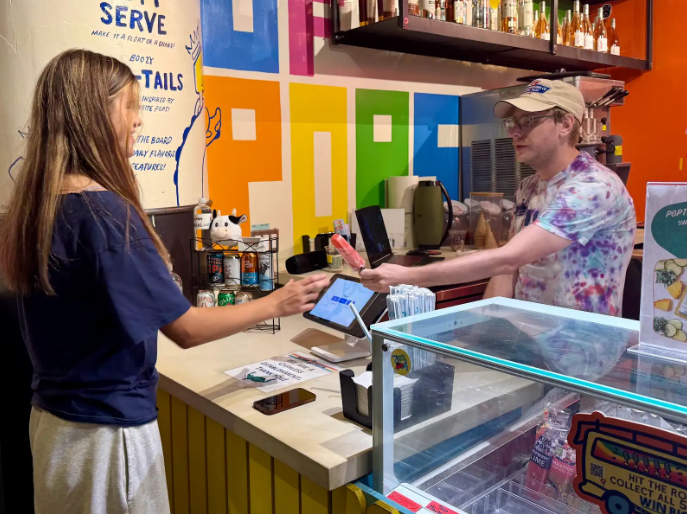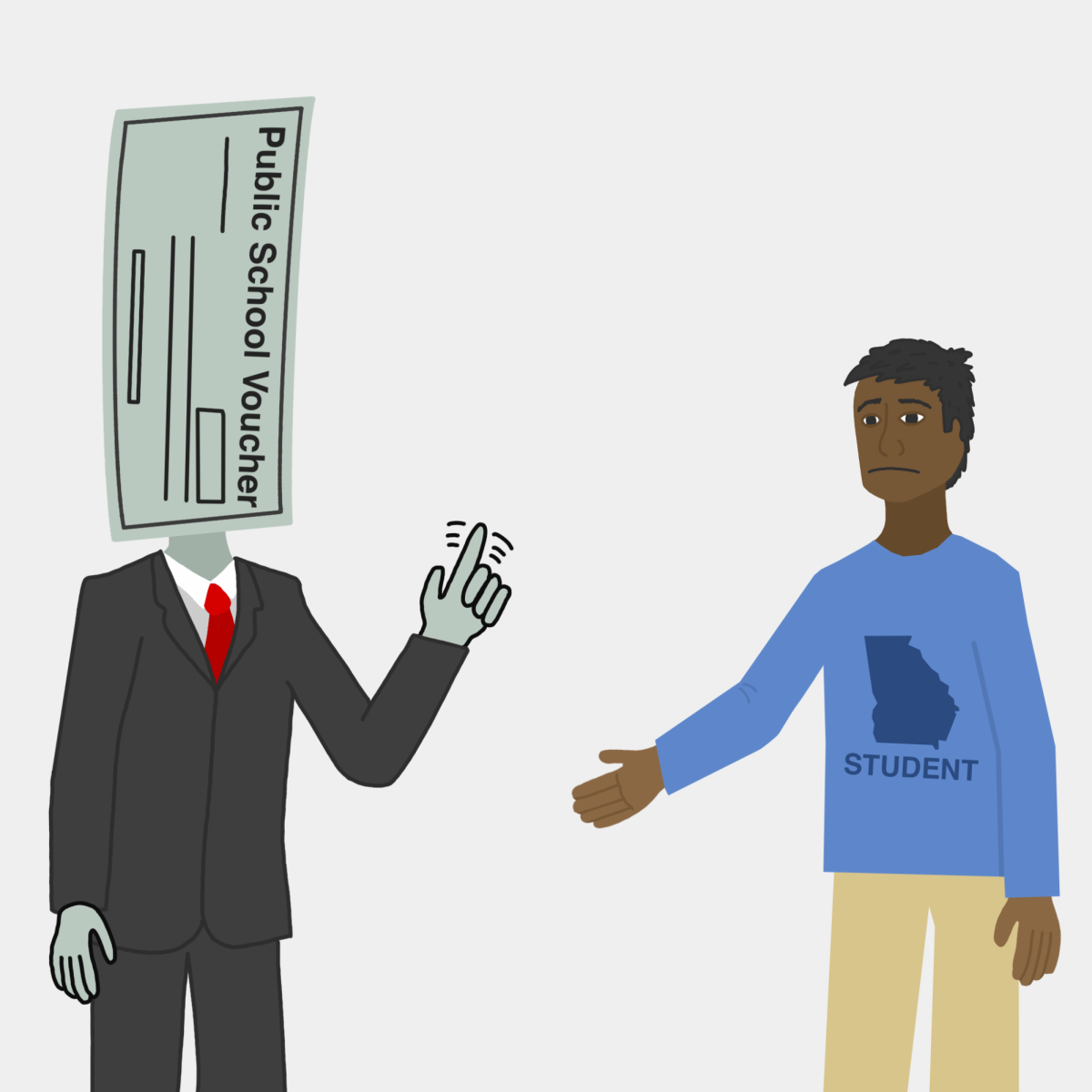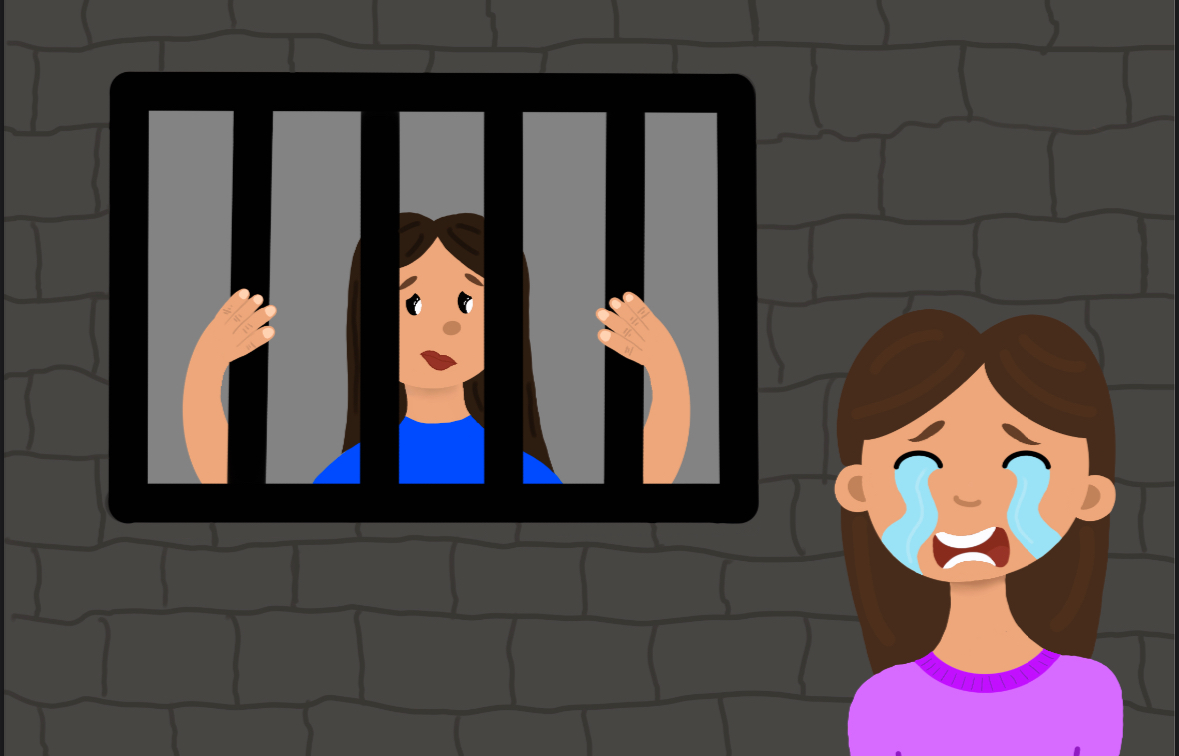
After a long second period, as students head out to the courtyard for lunch and stroll by the different groups of people congregating, they might spot a quickly disappearing cloud of vapor rising over some students’ heads. The cloud appears to be cigarette smoke yet surprisingly doesn’t smell like tobacco.
This occasional courtyard phenomenon reflects a recent trend: the increased use of e-cigarettes among middle and high school students.
During the 2012 calendar year, high school students doubled their use of electronic cigarettes according to data released by the Centers for Disease Control and Prevention. The surging popularity of this unregulated product has prompted many government officials and health experts to question whether electronic cigarettes are safe and sufficiently regulated.
E-cigarettes, or “vapes,” are electronic inhalers meant to substitute for tobacco cigarettes. An e-cigarette generally uses a battery-powered heating element that vaporizes a liquid solution. Some vapes release nicotine, while others merely release flavored vapor. E-cigarettes do not smell or cause any form of secondhand smoke because the smoke is made up of water vapor. E-cigarettes can be smoked in public places where tobacco cigarettes have been banned (such as libraries, airports and restaurants).
One Grady senior said that e-cigarettes have made it possible for him to smoke on the Grady campus without being detected. The senior, who spoke with The Southerner on the condition of anonymity, had been suspended on two different occasions for smoking cigarettes in school. Because e-cigarettes are much less detectable, he said that he is able to smoke on school grounds in places such as the courtyard and near the trailers without the fear of getting caught.
“[There is] no smell,” he said, “and the smoke disappears really quickly.”
The senior started smoking rolled paper with classmates in elementary school and was influenced to smoke cigarettes by family members and close friends who were smokers. Two years ago, he tried his first e-cigarette because a friend told him it would help him quit cigarettes.
“It didn’t bring the same feeling a normal cigarette would bring,” he said. “My first experience was that I was literally smoking air. It was weird.”
According to recent data released from the CDC, middle and high school students have doubled the use of e-cigarettes from Jan. 1, 2012 to Dec. 31 of the same year. A report from the National Youth Tobacco Survey shows that the percentage of high school students using e-cigarettes rose from 4.7 percent in 2011 to 10 percent in 2012.
Darryl Konter, a health communication specialist for the CDC Office on Smoking and Health, said there is concern that e-cigarettes are not serving their intended purpose. Instead of reducing smoking, vapes might instead be increasing it. Konter fears that many young people are smoking both e-cigarettes and tobacco cigarettes. Even more troubling, he said, there are currently no state or federal regulations governing the use of e-cigarettes.
“Our study found that a significant proportion of middle and high school students who had tried e-cigarettes had never tried conventional cigarettes,” Konter said. “Because nicotine is so highly addictive, it’s possible students who use e-cigarettes could get addicted to nicotine, and eventually start using conventional cigarettes, too,”
The CDC reported that 90 percent of all smokers started when they were teenagers.
“E-cigarettes are made with all kinds of candy and fruity flavors, which are directed towards the youth rather than adults,” Konter said. “Then there are ads that portray e-cigarettes as something that’s cool, glamorous or sexy, just like [traditional] cigarette ads did 40 years ago.”
Assistant Principal David Propst said he has never seen an e-cigarette on Grady campus.
“I really don’t know anything about them,” Propst said. “If anyone asked me about them I would not know about them. I have never seen [them], or have had to deal with [them].”
Although Propst has never had to deal with e-cigarettes, he said the school policy toward them is the same as with other banned products.
“Contraband is contraband,” he said. “This a government building and like any government building you can’t have it.”
The school policy for banned substance calls for confiscation of the item, return of the item to the student’s guardian or parents and suspension or even expulsion based on the offender’s prior disciplinary records.
James Henderson, an ex-cigarette smoker, works just 3.6 miles from Grady at Vaperite, the nation’s first vape bar. Henderson said that he doesn’t condone any use of underage smoking.
“If you are under 18, [smoking] is against the law,” Henderson said. “You shouldn’t do it, but people do. I wouldn’t sell it to them but I would rather they [smoke e-cigarettes] than cigarettes.”
On Sept. 12, the crowd at the Vaperite Store and Bar, located on the corner of Cheshire Bridge and Lindbergh, included many different groups of people smoking e-cigarettes. Even though the smokers produced large clouds of vapor, there was no hint of tobacco odor in the air.
“It’s different than a cigarette,” Henderson said. “You can do all sorts of flavors. ”
Henderson said their products contain propylene glycol and glycerol, which create the vapor, different levels of nicotine ranging from 0 to 26 milligrams and different types of flavors such as watermelon and grape.
E-cigarettes began as a smoking cessation program and because the Food and Drug Administration restricted flavored cigarettes. For those who want to stop smoking, the electronic cigarettes have become a way to reduce nicotine intake in a controlled manner. For people who wanted to continue smoking flavored nicotine, e-cigarettes have provided a means to do so.
Another Grady senior who requested anonymity, a girl who began smoking at age 15, hoped that e-cigarettes would be a good alternative to smoking without “killing my lungs.” But she says she is not a fan of switching to electronic cigarettes.
“I prefer the real one,” she said. “They are more satisfying and relieve stress better. Also e-cigs make my throat hurt.”
That view bucks the trend clearly on display at Village Smoke, located less than half a mile from Grady, on Monroe Avenue. Like Vaperite, Village Smoke also has a wide variety of both disposable and rechargeable e-cigarettes. A large “No One Under 18” sign hangs above the door.
Erin Griffin, an employee of Village Smoke, said the e-cigarettes do not emit secondhand smoke and represents a fast-growing industry.
“I see these as the cigarettes of the future,” Griffin said. “I think it’s a huge trend and not going anywhere for a long time. I think they are only going to get stronger.”
However, Griffin did express some concern about the safety of the drug.
“There are no signs saying they are completely unharmful so far, but they are definitely better than cigarettes,” Griffin said, “Nonetheless we don’t know of any long-term risks.”
Konter agrees that there is no way to know for sure what is in e-cigarettes. “There are more than 200 different e-cigarette makers out there, and there is no regulation in place to make sure you know what’s in the e-cigarette you use.”













wood hanging • Mar 18, 2015 at 3:20 am
What’s up mates, its great paragraph on the topic of teachingand completely explained, keep
it upp all the time.